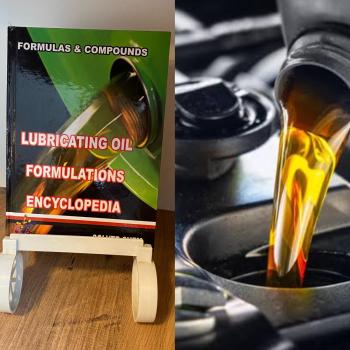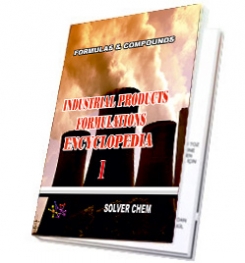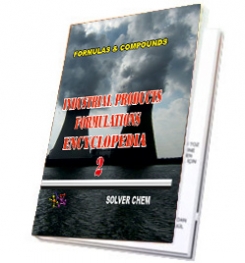
Regardless of the lubricant selected, the end user has a great deal of influence over the actual life of the lubricant by managing system contamination and refreshing the additive system. Contamination control is the easiest and most widely applicable method for extending lubricant life.
Contamination includes all foreign and unwanted forms of matter and energy, including particles, moisture, heat, air, chemicals and radiation.
Heat
Heat is the lubricant's worst enemy. The oxidative life of a lubricant relative to temperature generally follows the Arrhenius Law; that the rate of a chemical reaction increases exponentially with the absolute temperature. A rule of thumb is that the oxidative life of oil is halved for every 10ºC increase in temperature. For example, if the oxidative life of the lubricant is 1,000 hours at 100ºC bulk oil temperature, a useful life of 500 hours could be projected at 110ºC, 250 hours at 120ºC and so forth. Managing temperature is critical to managing lubricant life. If a cool temperature cannot be maintained, a premium lubricant may be required. Bulk oil temperature (for example, tank or sump temperature) influences the rate of oxidation. However, transient contact with hot surfaces can result in thermal degradation, as previously discussed.
Air
Air is another factor that influences both the rate of oxidation and thermal degradation. It is the primary source of oxygen required in the oxidation process and all lubricants contain some dissolved and/or entrained air. Increasing the amount of dissolved and entrained air increases the rate of oxidation. The relationship is approximately one to one, so doubling the concentration of air roughly doubles the rate of oxidation. Hot compressed bubbles are also a primary cause for thermal failure, especially in high-pressure hydraulic machines. Managing air contamination should be an important component of any plan to extend lubricant life. Interfacial tension between the oil and air bubbles, which is influenced by both the base oil and additive system, determines how air can be entrained in the lubricant. Where interfacial tension is high, air bubbles dissipate and separate readily. Where interfacial tension is low, air is more readily entrained. Tank design and volume, lubricant delivery mechanism, and numerous other factors also influence the air contamination level.
Moisture
Moisture is the enemy of most lubricant components. It results in de-esterification of ester base oil components, reduces additives to acid and/or sludge and promotes base oil oxidation, especially in the presence of catalytic metals such as iron or copper. Water enters the machine where it interfaces with the environment, including contaminated new oil sources, breathers and vents, shaft seals, etc. Humid environments where the machine operates intermittently and where machines are subjected to water spray hold the highest risk. The best way to control water contamination is by using premium seals, desiccant or other water-excluding breathers. Dehydrating methods can also be employed to remove excess water.
Particles
The influence particles have on lubricant degradation depends on the particle type. Suspended particles can increase air entrainment, which indirectly increases the rate of oxidation. However, some particles may catalyze oxidation. The catalytic influence depends on the metallurgy and the presence of water. Silicon, which is the primary element found in the earth's crust, is not highly catalytic to lubricant oxidation. On the other hand, iron and copper, the primary elements found in machine metallurgy, are highly catalytic to lubricant oxidation. The degree to which iron and copper particles influence the oxidation rate depends on the presence of water. The water reacts with the metal, forming peroxides and free radicals, which causes oxidation. Fortunately, the ingress of particle contamination is typically managed in the same manner as water contamination because it enters at the points where the machine interfaces with the machine. Similar to water, particles should be excluded. Unfortunately, because the machine generates its own particles, removal is required to maintain material balance. Numerous particle removal devices are available for use in industry, most notably filters. Filter quality and the decision to incorporate other particle removal technologies is application-specific.

any engine oil
LUBRICATING OIL
FORMULATIONS
ENCYCLOPEDİA
is enough.
LUBRICATING OIL FORMULATION ENCYCLOPEDIA has many formulations of greases, complex grease, lithium grease production,sodium greases formula, formulation,multigrade engine oils manufacturing process,motor oils making, gear oil production, synthetic engine oils,semi synthetic motor oils,gasoline oils,diesel oils production process,composition of turbine oils,transmission oil manufacturing, production of cycle motor engine, tractor oils,mineral based motor engine production,heat transfer oils, slideway oils formulation, formulations, cutting oils formula,formulas grinding oils,mould oils manufacturing process and etc.
All lubricating oils in the encyclopedia are producible easily.You need no help and no technıcal support. The encyclopedia is enough to produce lubricating oils and engine oils itself.
LUBRICATING OIL
FORMULATIONS
ENCYCLOPEDIA
is written clear and understandable.


HARD BOOK E BOOK
RELATED TAGS: What is engine oils,making synthetic diesel engine oil,semi synthetic engine oil manufacturing process,mineral based engine oil production, heavy duty engine oil formulation,high performance engine oil formula,formulas,properties of motor oils,synthetic motor oil msds, analysis,composition of engine oils,additives of motor oils, mineral engine oil formulation,make semi synthetic diesel engine oil, base oils,synthetic base oils,light neutral oil,heavy neutral oil,performance additives package, properties of diesel engine oil, how to formulate engine oils, types of engine oils, synthetic motor oils,ingredients of engine oils,compounds of engine oils, index of motor oil,characteristic of motor oils,application of motor oils,combination of synthetic engine oils.
SOLVERCHEM PUBLICATIONS

|
|

|
|

|
|
